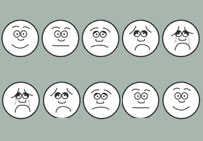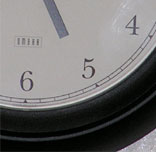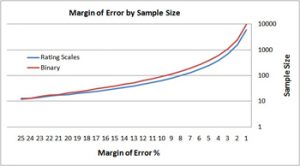Topics
Topics

That’s The Worst Website Ever!: Effects Of Extreme Survey Items
Items in questionnaires are typically worded neutrally so as not to state concepts in the extreme. They are like an even-tempered friend—they have opinions but aren’t overly optimistic or chronically pessimistic about things. What happens when items in a questionnaire or survey are worded in the extreme? Two years ago we tried a little experiment

Survey Respondents Prefer the Left Side of a Rating Scale
Subtle changes to response items in surveys and questionnaires can affect responses. Many of the techniques for item and scale construction in user-research come from marketing and psychology. Some topics can be controversial, sensitive or confusing and so having the right question with the right response options is important. Attitudes about usability aren’t typically controversial

97 Things To Know About Usability
You are ultimately measuring an interface not users. Tell the users you are measuring the interface not them. Usability testing is not QA testing. Usability testing is finding problems with user interactions. QA testing is identifying problems with code that also impacts the user. Usability is a combination of user-attitudes and performance about an interface.

6 Things You Didn’t Know About Heuristic Evaluations
A Heuristic evaluation is a process where someone trained in usability principles reviews an application (a website or software). She compares the website against a set of guidelines or principles (“Heuristics”) that tend to make for more usable applications. For example, if while completing a task a user gets a message that says “Error 1000xz

Should You Use 5 Or 7 Point Scales?
If you’ve ever designed a survey or questionnaire you’ve probably wondered how many points the response options should have. Most questionnaires I’ve examined either use five point scales or seven-point scales. Is one better? 7-point scales are slightly better The short answer is that 7-point scales are a little better than 5-points—but not by much.

Usability Evaluators: Reliable as Radiologists?
Does this man need back surgery? Does this woman have breast cancer? Does this website have usability problems? Chances are you’re not qualified to answer the first two questions but probably able to provide some answers about the third. This image comes from the Hotel Pennsylvania website. It was the subject of

7 Living Legends Of Usability
Love them, hate them, admire them or ignore them. These seven living legends aren’t one-hit wonders. Their work has had and will continue to have a large impact on the field of usability for some time. Here they are in alphabetical order: 1. Joe Dumas “Dr Usability” is author of dozens of articles on

Memory Versus Math In Usability Tests
I write a lot about the importance of confidence intervals and making the most of small sample sizes. Recently, Dean Barker, director of UX at Sage CRM read one of the articles on margins of error and sample sizes and said: “I understand there is variability with small samples but I’m having a hard time

Books Faster than Tablets…Or Not?
Recently Nielsen conducted a study on the reading speeds between the printed book, Kindle and iPad. From 24 users the study concluded that the iPad took about 6.2% longer (p =.06) and Kindle about 10% longer (p <.01) to read than the same story on a printed book. From this data Nielsen concluded “Books Faster

A Brief History Of The Magic Number 5 In Usability Testing
Wondering about the origins of the sample size controversy in the usability profession? Here is an annotated timeline of the major events and papers which continue to shape this topic. The Pre-Cambrian Era (Up to 1982) It’s the dawn of Usability Evaluation and the first indications of diminishing returns in problem discovery are emerging. 1981:

What is a Representative Sample Size for a Survey?
Will users purchase an upgrade? What features are most desired? Will they recommend the product to a friend? Part of measuring the user experience involves directly asking users what they think via surveys. The Web has made surveys easy to administer and deliver. It hasn’t made the question of how many people you need to

The Five Most Influential Papers In Usability
I compiled a list of papers that have had a large and lasting influence on the field of Usability and User Experience. I then asked Jim Lewis and Joe Dumas, two pioneers in this field for their top five. There was considerable overlap in both the papers and topics suggesting that while there may be